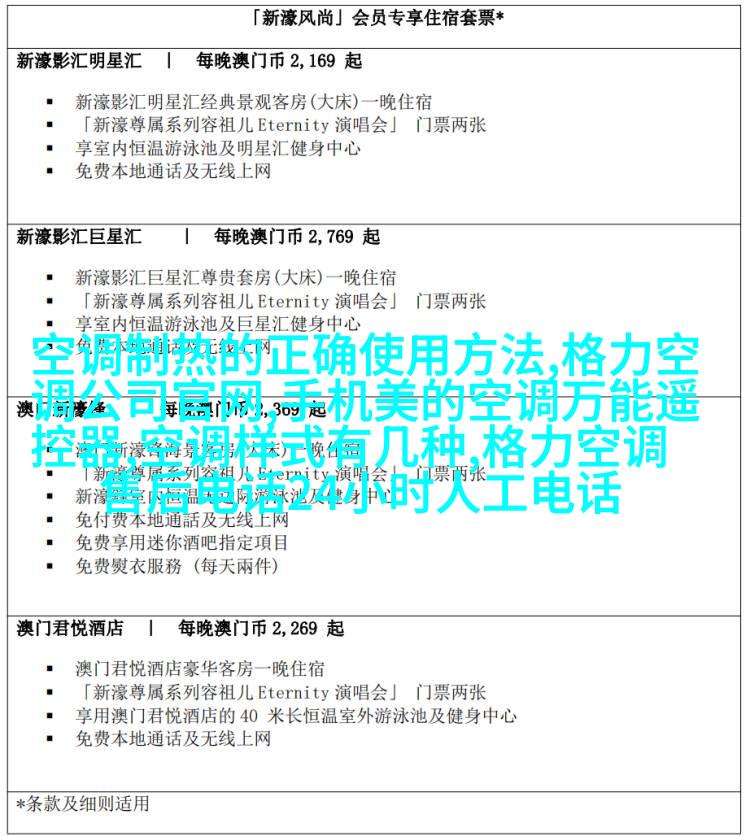冰柜的基本结构与工作原理

首先,我们需要了解冰柜的基本结构和工作原理。现代冰柜通常由一个内置式或悬挂式冷却单元、一套制冷剂循环系统以及控制温度的电子电路组成。当你打开冰柜门时,你会发现一排排有着不同的标记(如-18°C、0°C等)的抽屉,这些标记代表了不同档位对应的温度。这些档位对于食品保存至关重要,它们决定了食物存放过程中是否能保持新鲜,甚至是安全。
冷冻技术概述

在讨论如何使用冰柜之前,我们需要了解一下冷冻技术。这是一种通过减少水分来达到食品干燥,从而延长其保质期的方法。在这个过程中,水分转化为固态,即结晶,这个过程可以发生在低温下,比如-18°C以下。然而,不同类型和品种的食品对这一过程有不同的需求,因此,在实际应用中我们需要根据具体情况来调整温度设置。
冰柜中的不同档位及其用途

-18°C以上档位:速冻区
最上面的抽屉通常被用于速冻,这里的温度高于-18°C,可以适应一些不太需要极端低温保存的大型食材,如整块肉类或者较大的蔬菜。此外,对于一些特定食材(比如鱼类),短时间快速降温到-12℃以下以防止细菌生长也是必要的一步。

0°C左右档位:常温区或储藏室
紧接着的是一个更接近室内环境(大约0摄氏度)的区域,这里适合存放那些并不要求特别低温但又不能放在室温下的物品,比如厨房用品、饮料等。在这里,产品不会因过热而变质,但也不会因为过凉而造成霜点形成的问题。

-10/-15/-20℃之间的多个层次:深度冷藏区/慢速冷冻区/超级慢速冷冻区
随后往下则是多个不同温度范围的抽屉,其中包括深度冷藏区、慢速冷冻区以及超级慢速冷冻区。每个区域都服务于不同保质期要求和产品类型。
深度冷藏区:
这部分一般设定在-10℃左右,是为了保持肉类、海鲜等湿润性强且含水量高的大宗食品新鲜。
慢速冷冻区:
此处设定在比深度冷藏稍低一点的情况下,以满足那些不急需立即完全变硬但仍然希望能够维持一定新鲜性的商品,如未经加工的小批量肉类。
超级慢速coldzone:
最底层一般设定为最高负数,比如-20℃之类,专门用于长时间保存并确保最佳口感及营养素价值的一些特殊商品,如已加工好的零售包装食品或者某些非常难以处理且受限于储存条件限制小批量货物。
冰柜使用指南
如何正确地设置您的冰箱?
要确保您的家庭成员都能从您家中的食品获得最大收益,最好的做法是将食材按照它们所需进行分类,并根据它们所需达到的目标状态(即新的“空气”)来选择恰当的手段——例如,将罐头置于通风良好的地方,而不是直接放在密封容器内;将饼干盒子盖严实,以避免吸收其他味道;将所有可腐烂材料远离任何可能产生热量的地方,并确保他们可以得到充分通风以防止发霉。同时,请务必注意清洁,每周至少一次彻底擦拭整个设备内部,以及每天检查并清除任何积聚污垢或残留物品,因为这是保证健康饮食不可缺少的一部分。
icebox cold storage and preservation techniques for specific food groups:
Meat: Cold storage of meat is critical to prevent bacterial growth. The ideal temperature for storing raw meat is between 2 and 5 degrees Celsius (36 to 41 degrees Fahrenheit). Cooked meat can be stored at room temperature or in the refrigerator, but it should not be left out for more than two hours.
Vegetables and fruits: Most vegetables can be stored at room temperature, while some need refrigeration. For example, potatoes and onions should not be refrigerated because they absorb moisture from the air, which leads to rotting.
Dairy products: Dairy products should always be kept cool by placing them in a refrigerator set at a low enough temperature that they are frozen solid within a few days.
Eggs: Eggs are best stored in their original cartons on the middle shelf of the refrigerator, where temperatures range from 4 to 6 degrees Celsius (39 to 43 degrees Fahrenheit).
Bread and baked goods: Bread can be stored at room temperature for several days before being placed in an airtight container or plastic bag in the freezer.
Canned foods: Canned foods do not require refrigeration as long as their seals remain intact.
7: Cleaning your fridge regularly will help keep bacteria under control and ensure that your food stays fresh longer.
In conclusion, understanding how different types of food react differently with various conditions helps you make informed decisions about what goes where inside your ice box when it comes time to store leftovers after meals or stocking up on groceries.
Icebox cold storage techniques may seem simple but knowing which ones work best with specific food items allows you maintain optimal freshness without sacrificing taste quality through proper utilization of these distinct compartments offered by most modern appliances today!



